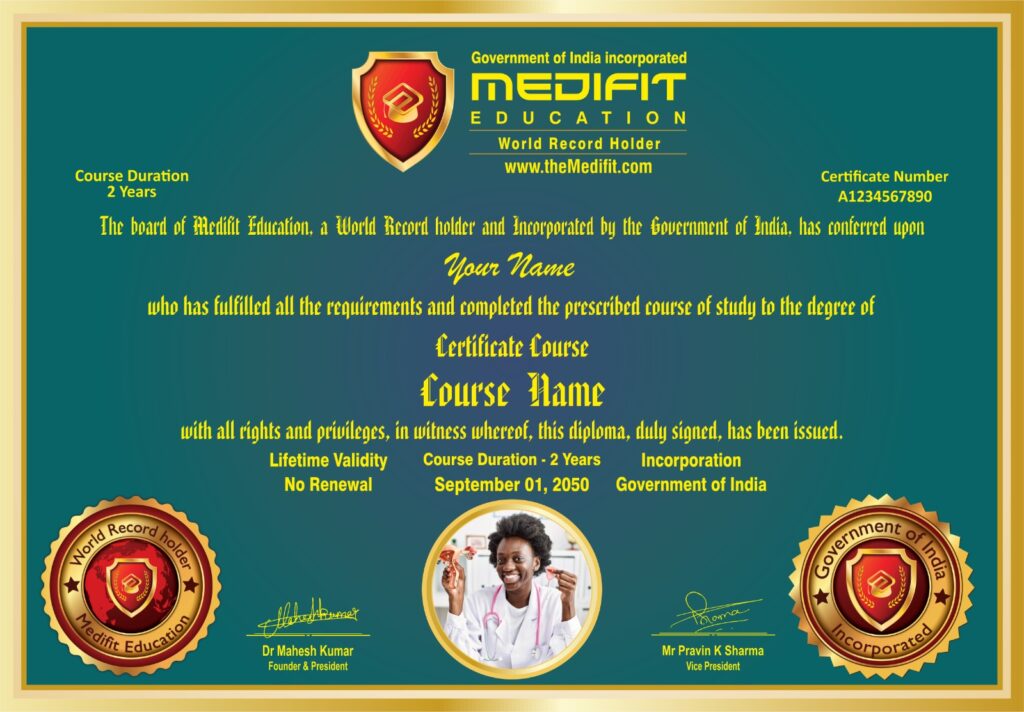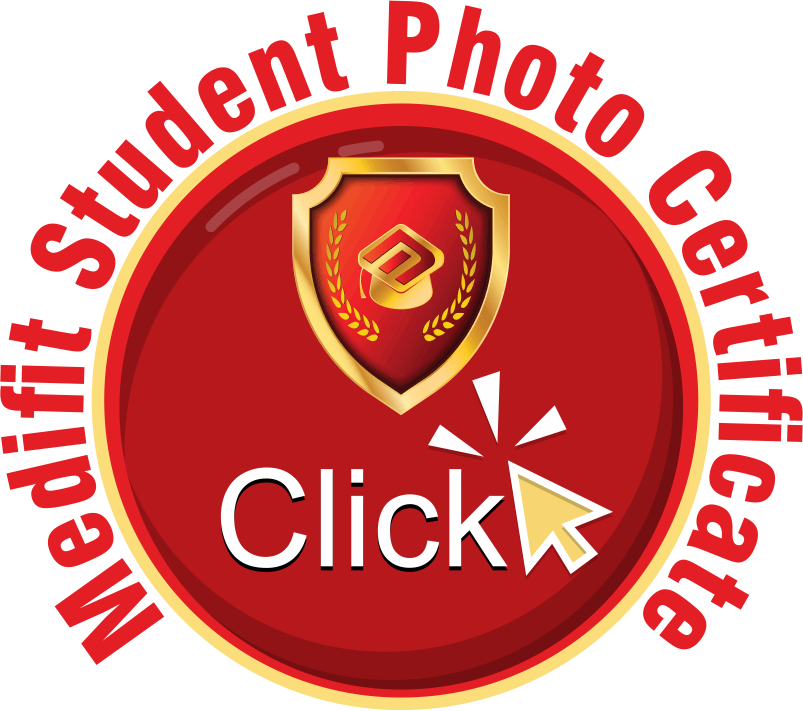Whole world including current Medical Fraternity is inspired by the Great Noble Medical Revolutionists mentioned below.
Hippocrates
(FATHER OF MEDICINE)
(460 BC – 370 BC)
 Hippocrates was a physician in Ancient Greece. He is thought by many to be the Father of Western Medicine. He was an incredibly forward thinking man who developed ideas that were ahead of his time. He was outspoken in his belief that illness was not caused by the displeasure of the gods, but had actual physical causes. He acknowledged that lifestyle, diet and environmental factors all affected physical health. It sounds obvious to us now, but that is because we have over 2,000 years of his influence to thank. At the time this was an incredible belief,that questioned both the authority of the gods, and other physicians of the time.
Hippocrates was a physician in Ancient Greece. He is thought by many to be the Father of Western Medicine. He was an incredibly forward thinking man who developed ideas that were ahead of his time. He was outspoken in his belief that illness was not caused by the displeasure of the gods, but had actual physical causes. He acknowledged that lifestyle, diet and environmental factors all affected physical health. It sounds obvious to us now, but that is because we have over 2,000 years of his influence to thank. At the time this was an incredible belief,that questioned both the authority of the gods, and other physicians of the time.
He was also a founder in the practice of taking medical and family histories from patients. These are routine practices for any medic today, but they originated with Hippocrates.
Hippocrates is probably best known as the creator of the Hippocratic Oath. This is a statement of moral and professional ethical standards that physicians were expected to abide by. This is still sworn on graduating medical school in some areas (in an updated form).
Sir Archibald McIndoe
(PLASTIC SURGEON)
(1900-1960)
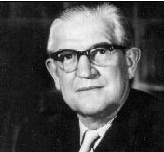
Archibald McIndoe was a doctor from New Zealand. In 1938 he was made the consultant plastic surgeon to the RAF. When the Second World War started he found himself treating pilots who had been shot down during military action. Reconstructive plastic surgery was still in its infancy, and McIndoe was one of only four plastic surgeons in the UK at the time.
The conventional methods of using acid to remove damaged skin and then waiting two months before trying to perform surgery meant that the pilots had to spend long periods in agony. It also resulted in a great deal of scar tissue. McIndoe decided to operate immediately, cutting away damaged tissue so that skin grafts could be placed straight away. This greatly increased the chances of healing, resulting in less scarring and much more mobility. He also developed new skin graft techniques which resulted in lower infection rates and more successful grafts. The men who were in his care became known as The Guinea Pig Club as the methods McIndoe tried were so ground-breaking.
Alexander Fleming
(FATHER OF ANTIBIOTICS)
Inventor of Penicillin
(1881-1955)
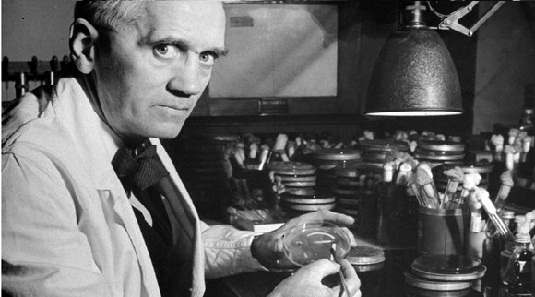
Alexander Fleming was a renowned biologist and pharmacologist. He is also known as the Father of Antibiotics. He is credited with the clinical discovery of Penicillin. This was an accidental discovery.
However, he found that it was very difficult to obtain enough of the penicillin to be effective, and found that growing it on a larger scale was very difficult and time consuming, so he did not progress any further with it.
Ten years later his research was continued by Howard Florey and Ernst Chain at Oxford University. They found a method of mass producing Penicillin, and in 1944, after clinical trials, obtained funding from the US and UK governments to produce it on an industrial scale. Both governments were very keen to have this “wonder drug” available to troops fighting in occupied Europe, and at risk of infection from battle wounds. In 1945 Fleming, Florey and Chain were awarded the Nobel Prize for medicine for the discovery and production of Penicillin.
Marie Curie
(INVENTION OF RADIOTHERAPY FOR CANCER)
(1867-1934)
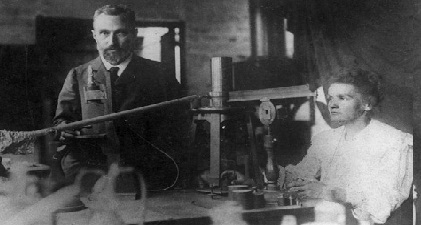
Marie Curie was a Polish born scientist, although she moved to France to study and stayed there after meeting her husband. She researched and experimented with radioactive substances, and invented the word “radioactivity”. Her husband, also a scientist, assisted with her research and in 1903 they were both awarded the Nobel Prize in physics for their research into the “radiation phenomenon”. Curie is the discoverer of both Radium and Polonium and in 1911 she was awarded the Nobel Prize for chemistry for her discoveries. She was the first women to be awarded a Nobel Prize, and was the first person to win multiple Nobel Prizes. She remains the only woman to have won the award twice.
Curie’s research helped to develop radiation as a therapeutic tool. Curie’s research identified that it can do localized damage to a targeted area of the body, and could be useful in treating cancerous tissue. This is still the foundation of radiotherapy today, although the methods have changed. At the time she filled small glass tubes with Radon (a radioactive gas) that could be inserted into the area of the tumor, causing it to shrink.
During World War One, Curie and her daughter used their findings to help soldiers injured on the front lines. They fitted x-ray machines to vehicles and drove them directly to field hospitals. They were able to show the location of bullets, shrapnel or broken bones, and were a great assistance in providing appropriate medical care.
Unfortunately, at the time the harmful effects of working with radioactive materials were not known, and both Curie and her husband suffered ill health due to their high levels of exposure. They both exhibited sores on their fingers from handling the materials directly, and Curie herself eventually died of leukemia. Her research notebooks have such high levels of radioactivity that it is still not safe to handle them without protective equipment. Belatedly, the French government ensured that both of the Curie’s remains are now at the Panthéon in Paris. The effect of radiotherapy, and later chemotherapy, and on-going research into cancer and leukemia cannot be overestimated. The result of Curie’s work has saved countless lives.
Florence Nightingale
(LEGENDARY NURSE)
(1820-1910)
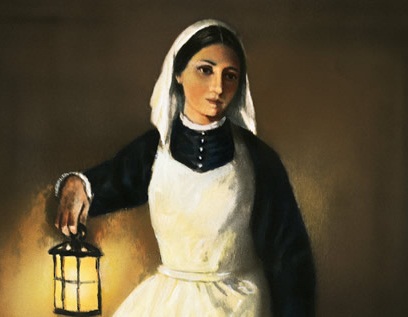
Florence Nightingale is possibly the most famous nurse in history, she is known as “the Lady with the Lamp”. The facts that are known about her are often shrouded in exaggeration and legend.
She was born to an upper class British family, and was highly educated. She felt that she was called by God to become a nurse; a move which her family felt was beneath her. She went to the Crimean front in Eastern Europe to tend to soldiers in 1854, where hospitals had an appallingly high death rate. At the time diseases such as cholera and typhoid fever were rife, with soldiers being seven times more likely to die after admission to hospital than they were on the battlefield. The importance of sanitation was not fully understood at the time, and patients were housed in dirty conditions, surrounded by the human waste of those with infectious diseases. It is widely thought that she improved the hygiene conditions in the hospital during the war, causing the death rate to drop. This is not accurate, or a claim that she ever made. In fact the British government sent the sanitation commission to the area. They cleaned the sewage out of the military hospitals, after which the mortality rates dropped.
Nightingale was a talented mathematician, with a passion for statistical analysis. She was the first female member of the Royal Statistical Society. Following her return from the Crimea she did analysis into the rate of death and what had affected it, and found statistical evidence that it was the improvement of sanitation and cleanliness that had made the biggest changes in improving the survival rates.
She set up a nurse training college in St Thomas’ Hospital in London in 1860. Prior to this, nurses had a poor reputation of being rough and crude women with little training, loose morals and regular drunkenness. It was not considered a suitable profession for well brought up ladies. Nightingale schools had strict regulations about behavior and sobriety, and had a curriculum for student nurses to follow. They also emphasized the importance of clinical training on wards. Nightingale herself continued to write textbooks of nurse education. International Nurses Day is still celebrated on her birthday every year, 12th of May.
The changes that she influenced in healthcare caused a major transformation in patient care and nurse training. These have had a major impact on the way that medical care is given today, and it is this level of influence that has set her apart from other nurse innovators of the time.
Edward Jenner
(FATHER OF IMMUNOLOGY)
(1749-1823)

Edward Jenner was a British doctor. He is considered to be the Father of Immunology. At the time there was no preventative medicine in the form that would be recognized today. There was no vaccination against illness, and epidemic was rife, devastating whole communities. Smallpox was a particularly virulent disease which was thought to have been contracted by around 60% of the population of countries where it was endemic, killing around 20%. This wiped out whole communities, leaving millions dead every year.
People were so scared of this disease that they tried to inoculate themselves against it by inhaling the scabs from smallpox sores. Unfortunately, this often lead to the person contracting the full blown disease.
In the midst of this, Jenner noted that milkmaids who frequently caught a less extreme version of the illness called cowpox, never seemed to catch smallpox. Cowpox caused blisters on the skin, similar to smallpox, but was not fatal. He theorized that cowpox might give the person immunity to smallpox and, amazingly, managed to get a local farmer to allow him to try an experiment on his son, James Phipps. In 1798, he drained some pus out of the blisters of a milkmaid with cowpox, and injected it into the arm of Phipps, and repeated this over a few days. He then injected him with smallpox. Phipps became unwell, but did not develop full blown smallpox and recovered within a few days with no scarring or other ill effects.
Jenner began vaccinating locals, and always offered his vaccine for free. He was adamant that he did not want it to only be available to the rich. He persevered to get his ideas accepted as there was a lot of defiance, particularly from the church, who felt that it went against God to give diseased animal material to humans. As the number of people who had been vaccinated increased the immunity became evident, with people who were protected failing to catch smallpox. His theories were accepted and within 30 years it was made compulsory to have the vaccination in England and Wales, and it was provided free to all.
Smallpox is now a non-existent illness, having been declared extinct by the World Health Organization in 1980.
James Blundell
(HUMAN BLOOD TRANSFUSION INVENTOR)
(1791-1878)
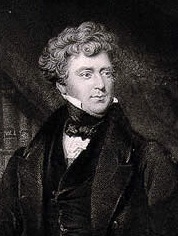
Blundell was a British obstetrician. At the time it was common for women to die in childbirth. He wondered if women who bled heavily after giving birth (and usually died) may be able to be given someone else’s blood. He experimented to find a way to safely transfuse blood from one person to another. He invented equipment specifically for this purpose, some of which is still in use today.
Prior to this, people had experimented with orally feeding blood to another person but this had been unsuccessful. Experiments were also made giving the blood of animals to humans. Some survived, although it appears that this was due to only receiving such small amounts of the blood that they only had a minor allergic response.
Blundell identified that for a human to successfully receive a blood transfusion of any significant quantity and survive, it needed to be from a human. He identified that blood that was stored would coagulate and realized that for his work to be successful the transfusions needed to be made on site. He eventually performed the first successful human blood transfusion from a husband to his wife when she started to hemorrhage following the birth of their child.
Not all of Blundell’s patients survived, but at the time they were also not aware of blood typing and the problem of immune rejection. Research into this was done later and further innovations have been made in this field, but Blundell should be acknowledged for pioneering the human blood transfusion. Transfusions save the lives of millions. Whether through accident, surgery, or chronic illness, people survive today who otherwise would not have.
Sigmund Freud
(FATHER OF PSYCHOANALYSIS)
(1856-1939)
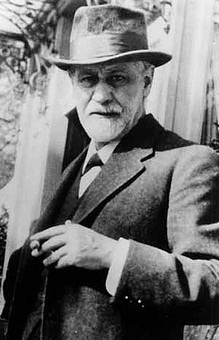
Freud was an Austrian neurologist and psychiatrist, although he is better known as the Father of Psychoanalysis. He treated patients with “hysterical” illnesses and neurosis. At the time society, including the medical establishment was incredibly sexist.
He was one of the first to consider that these illnesses may have a psychological, rather than physical cause. He developed a treatment which was unheard of at the time, which basically involved listening to the patient. He was a pioneer of the “Talking Cure”. He initially tried hypnosis, and later used his method of psychoanalysis.
Freud was one of the first people to scientifically acknowledge that “hysterical” illnesses could be due to traumatic memories which were repressed. Freud also developed theories about sexuality, and stated that the development of a healthy functioning person was due to successful transition through stages of sexual development.
It is important to remember that when Freud was developing his theories, sex was not discussed in the way it is now, and Victorian values reigned.
Currently psychoanalysis is in decline, and is not widely used as a treatment. It is, however, the precursor for modern psychological treatment. The vast majority of treatment of anxiety based disorders is now with verbal therapy, allowing people to discuss and explore their problems and the reasons for them. Prior to Freud this would have been impossible. He has allowed the area of psychology and the related area of psychiatry to advance dramatically. His theories have become widely known outside of the medical field, and have encouraged the consideration of psychology to become popular. This has made a huge impact in helping to reduce the stigma of mental illness.
Joseph Lister
(FATHER OF ASEPSIS, SURGEON)
(1827- 1912)
Joseph Lister (Surgeon)
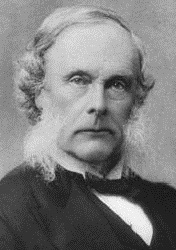
Joseph Lister was a British surgeon and professor of surgery. He is known as the Father of Asepsis. At the time people did not understand that germs exist, and how many illnesses are carried through the transfer of infected particles. They thought that illness was spread by miasmas (bad air), and used fragrant herbs and flowers as a way of warding off disease. Lister noticed that many of the people he operated on survived the surgery, but later died from what were known as “ward fevers”. In fact the rate of death from post-operative infection at the time was huge. Around this time the first research was being done into microorganisms, and Lister was aware of this. He proposed that the reason for post-operative infection was that organisms were flourishing in the wounds. He noted that doctors often went from one surgery to another without washing their hands, dealing with infected tissue before doing an invasive procedure on another patient and introducing the infection into the wound. He decided to try using carbolic acid as a disinfectant. He encouraged his surgeons to wash their hands in a solution of it prior to surgery, and to wear clean gloves. He also used it on his surgical equipment, had assistants spray a solution of it in the operating theater during surgery and used it to clean wounds and dressings. The rate of infection fell dramatically following the implication of these measures, and Lister was able to influence others at the time to acknowledge his techniques. Lister’s findings are still relevant today. This is the point at which improvements in sterilization and asepsis started.
MOTHER TERESA
(1910 – 1997 )
[Mother Teresa]

The Blessed Teresa of Calcutta, commonly known as Mother Teresa (26 August 1910 – 5 September 1997), was an Albanian born, Indian Roman Religious Sister, original name Agnes Gonxha Bojaxhiu.
The daughter of an ethnic Albanian grocer, she went to Ireland in 1928 to join the Sisters of Loretto at the Institute of the Blessed Virgin Mary and sailed only six weeks later to India as a teacher. She taught for 17 years at the order’s school in Calcutta (Kolkata).
Mother Teresa founded the Missionaries of Charity, a Roman Catholic religious congregation,
which in 2012 consisted of over 4,500 sisters and is active in 133 countries. They run hospices and homes for people with HIV/AIDS, leprosy and tuberculosis; soup kitchens; children’s and family counseling programmes; orphanages; and schools. Members of the order must adhere to the vows of chastity, poverty and obedience, and the fourth vow, to give “Wholehearted and Free service to the poorest of the poor”.
In 1946 Sister Teresa experienced her “call within a call,” which she considered divine inspiration to devote herself to caring for the sick and poor. She then moved into the slums she had observed while teaching. Municipal authorities, upon her petition, gave her a pilgrim hostel, near the sacred temple of Kali, where she founded her order in 1948. Sympathetic companions soon flocked to her aid. Dispensaries and outdoor schools were organized. Mother Teresa adopted Indian citizenship, and her Indian nuns all donned the sari as their habit. In 1950 her order received canonical sanction from Pope Pius XII, and in 1965 it became a pontifical congregation (subject only to the pope). In 1952 she established Nirmal Hriday (“Place for the Pure of Heart”), a hospice where the terminally ill could die with dignity. Her order also opened numerous centres serving the blind, the aged, and the disabled. Under Mother Teresa’s guidance, the Missionaries of Charity built a leper colony, called Shanti Nagar (“Town of Peace”), near Asansol, India.
She began her missionary work with the poor in 1948, replacing her traditional Loreto habit with a simple white cotton sari decorated with a blue border. Mother Teresa adopted Indian citizenship, spent a few months in Patna to receive a basic medical training in the Holy Family Hospital and then ventured out into the slums. Initially she started a school in Motijhil (Calcutta); soon she started tending to the needs of the destitute and starving. In the beginning of 1949 she was joined in her effort by a group of young women and laid the foundations to create a new religious community helping the “poorest among the poor”.
She was the recipient of numerous honours including the 1979 Nobel Peace Prize. In late 2003, she was beatified, the third step toward possible sainthood, giving her the title “Blessed Teresa of Calcutta”. A second miracle credited to Mother Teresa is required before she can be recognised as a saint by the Catholic Church. She was admired by many; in 1999, a poll of Americans ranked her first in Gallup’s List of Most Widely Admired People of the 20th Century.
Medifit Special Photo Certificates
07 Colors – Choose your certificate Color
Join Medifit’s WhatsApp Group
| Medifit’s Official Group | Started – July 2020 | 2 messages per day |
| Only Admins can message | No trolling | Medical & Fitness Certification Info. |


